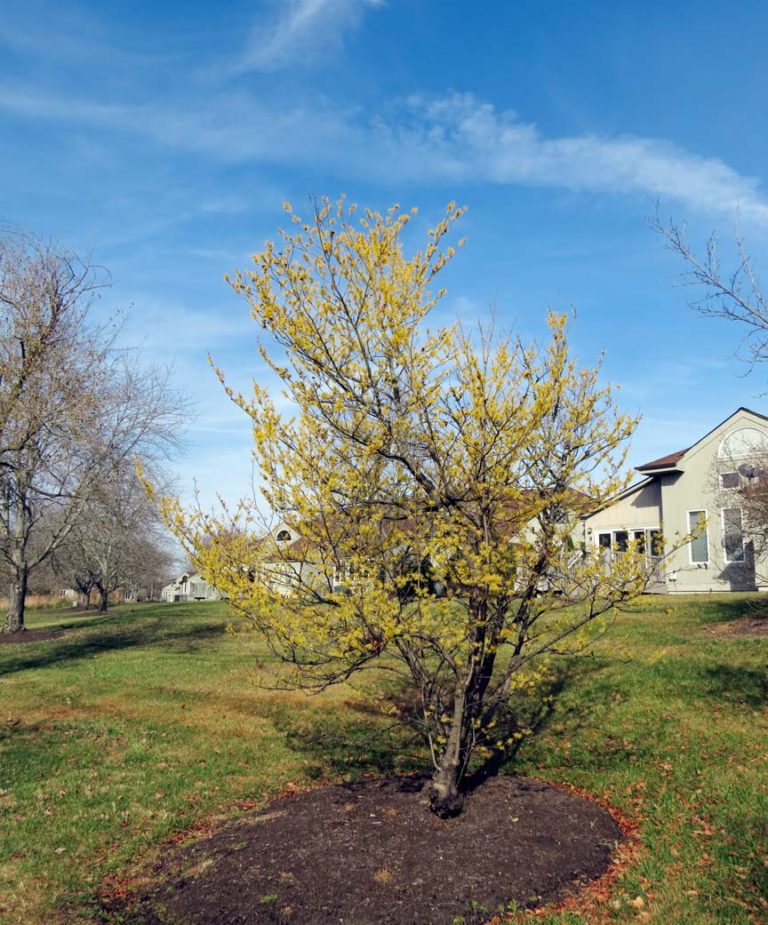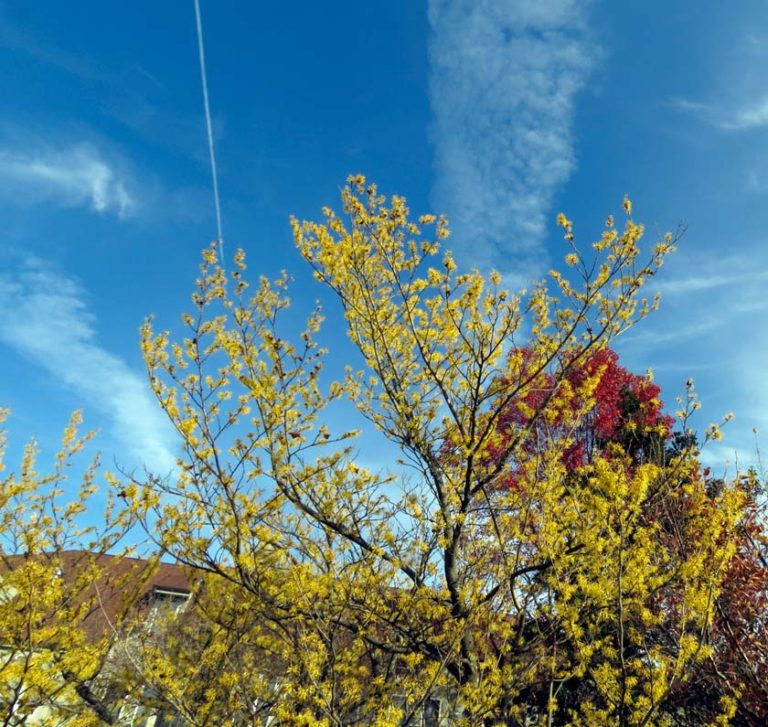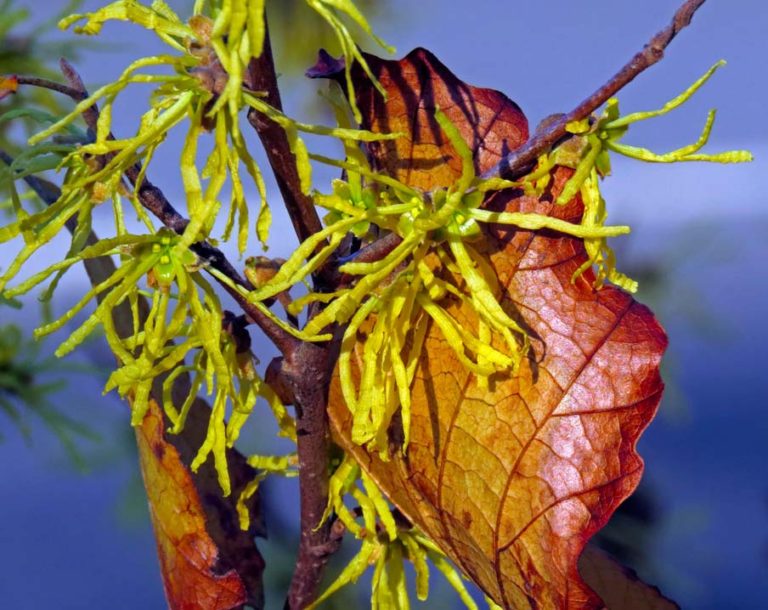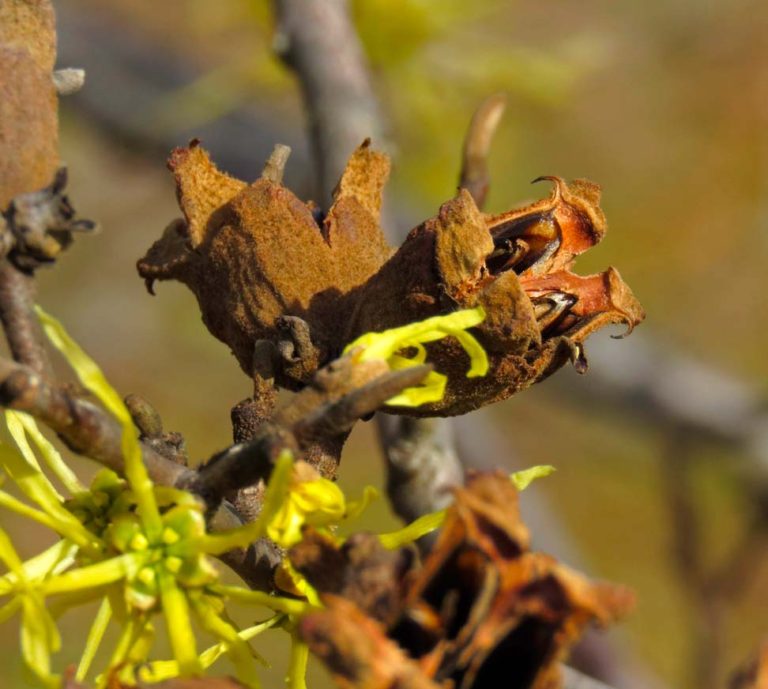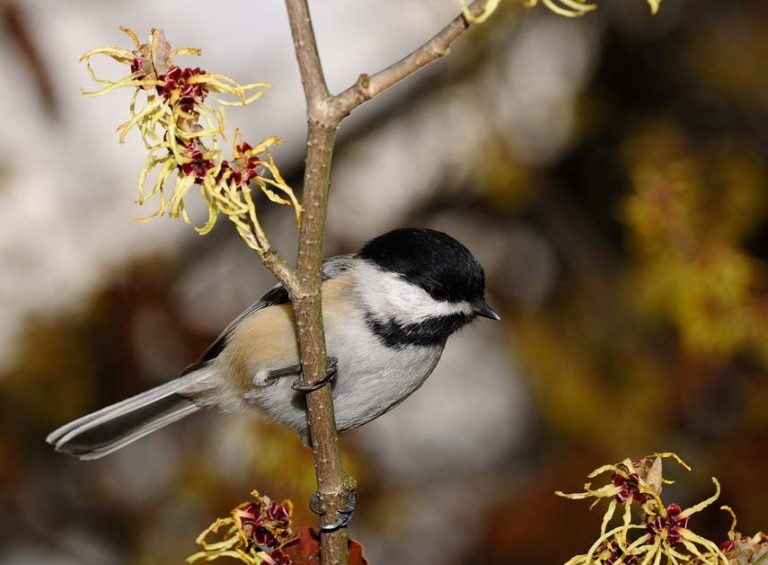I had long regarded the Witch Hazel to be a treat of late winter, the first trees to bloom when the Spring Crocus poke their blossoms above the snow. We have fine examples on the terrace outside the Willow Room, in Rushmore and in the courts. Perhaps that is why I may not have noticed during my four years here, that on my street (opposite B-685) there are two witch hazels that were in bloom from mid-October through December.
The above Fall-blooming trees are our native species H. virginiana, common in the understory of Northeast woodlands. Distillation of its twigs yields the astringent lotion Witch Hazel, an American original, whose aroma I still remember from my childhood.
Here is the lyrical description from an Arnold Arboretum monograph: “…the flowers are composed of four yellow, straplike petals that furl and unfurl with the temperature swings of late autumn.” The spent capsules you see are from last Summer; the two seeds they contained are said to be ejected explosively reaching 30 feet from their origin. H. virginiana is singularly absent as a native tree in the Outer Atlantic Plain, which starts a few miles east of us and dominates South Jersey. This is borne out by crowd-sourcing observations in both Wildflowers.org and iNaturalist where the few examples were street trees, in our part of Burlington County. There are two other species in N. America; one is confined to the Ozarks, and the third H.ovalis to a small portion of one county in Mississippi. Remarkably, this third species was overlooked until 2004!
As described in the earlier referenced monograph, the Witch Hazels we see in late winter are derived from the two Asian species of the genus Hamamelis, H. mollis from China and H. japonica from Japan. The variety “Arnold promise” outside the Willow Room was an accidental hybrid resulting from insect cross pollination of the two Asian species at the Arnold Arboretum. Part of the mission of the Arnold has been the study of East Asian temperate species. This has resulted in the introduction into Western arboriculture, and here at Medford Leas, of two additional species, the most prominent of which is the Dawn Redwood discovered in the mid 1940s. A second earlier species from China is the Seven Sons tree (Heptacodium) with two examples in the Courtyards and one fine individual on the Eastern border of the Great Lawn.
In the database maintained by Dave Bartram of trees of the Barton Arboretum there are several examples of past specimens of our native Witch Hazel, all of them deceased, their obituary among the decommissioned tree signs stacked in the Nature Center. Hopefully two of those will be redeployed here in Bridlington to draw the passerby’s attention to these two overlooked trees.
Meanwhile I look forward to early March and the Witch Hazels I have always expected in years past.
Which Chickadee?
This species is the Black Capped, not our local but similar Carolina. In New Jersey the former are exclusively found north of, while the latter are confined south of the Raritan watershed.
This photo was taken in early March at the NY Botanical Garden in the Bronx. The Witch Hazel is H. mollis.
—Fred Kahan

